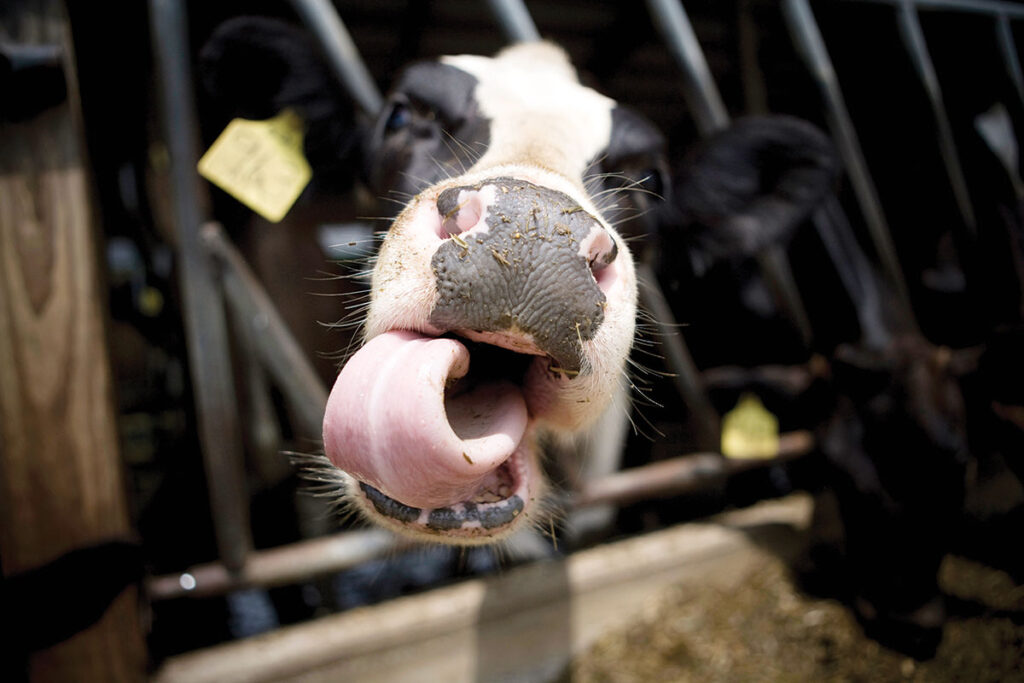
Caring for cows in their off-season
A little downtime goes a long way in improving a dairy cow’s future lactation. The care and nutrition cows receive during their dry period sets them up for success when they return to the milk barn. Scott Poock, DVM, University of Missouri Extension Veterinarian, Stacey Hamilton, Ph.D., University of Missouri Extension Specialist and Reagan Bluel, University of Missouri Dairy Extension Specialist shared the following information on the topic of dry cow management.
Proper Nutrition: The dry period is the future lactation for the cow. The vacation, so to speak, gives her time to heal and rejuvenate. Proper nutrition during the time off allows her to maintain condition and to produce quality colostrum for the calf.
In addition, correct nutrition reduces metabolic issues, such as milk fever, ketosis, uterine infections and retained placentas. With proper nutrition, the cow will transition easier from not making milk to producing large quantities.
Nutritional Requirements: Dry cows’ nutritional requirements are much different from their counterparts currently in milk production. Lactating cows are super athletes that require large amounts of energy and protein to optimize her genetic potential. Mineral programs will differ due to the massive amounts of calcium required in lactating cow.
A dry cow may only consume 2 to 2.5 percent of her body weight in dry matter feed, while a lactating cow may consume more than 4 percent of her body weight. This correlates to about 25 to 28 pounds of dry matter for the dry cows, compared to roughly 55 pounds for the lactating cows.
Target crude protein for dry cows runs between 12 to 14 percent, with the higher range for first calf heifers, because they are still growing. Additionally, producers should watch the amount of potassium the dry cow is receiving, too much potassium will cause more milk fevers.
Extension specialists recommend acidifying the ration using anionic salts, which helps prevent milk fever. The anionic salts help to acidify the cow’s pH, which results in her mobilizing calcium in preparation for lactation.
Management Practices: Producers should keep management practices in mind for dry cows prior to calving. The dry period for a dairy cow is the rest period and rejuvenation of the mammary tissue. Cows should be dried off at the body condition score (BCS) desired at calving. Ideal BCS for a dry cow is 3.25 to 3.5 on a 5-point scale. It is more efficient to put condition on a late lactation cow than a dry cow.
Producers working with their veterinarian should have a herd health program of vaccines that will protect the cow and calf. Typical vaccines may include one for scours to increase antibodies in the colostrum, one against mastitis (E. coli) and possibly one for blackleg. It is still recommended that all cows have all functional quarters treated with a dry cow intramammary tube along with a teat sealant.
Poock and Hamilton emphasize that the dry period is critical for the success of the cow’s next lactation. The first step is drying the cow off at the proper condition. For producers who have free stall barns, this is a great time to get the cows out on dirt and to ensure they get more exercise.
Ideally, producers should also give dry cows some type of heat abatement during the summer. Shade, fans and sprinklers are all ways to give the cows relief from the heat.
Stocking Density and Feed Access: Stocking density and limited access to feed can create problems for transition cows. This is especially relevant when first calf heifers are commingled with the mature herd and in once a day feeding. Specialists recommend at least 30 inches of bunk space per animal.
Additionally, transition cows can struggle with adequate intake of “dry cow hay.” If a producer is not effectively chopping the lower-quality hay, then cows may sort through the diet and get to just the silage and concentrate. Experts say depending on the situation, it might be worth having a contractor come and pre-process the hay to the appropriate particle size, which is 2 to 2.5 inches, to ensure cows consume the needed fiber.




